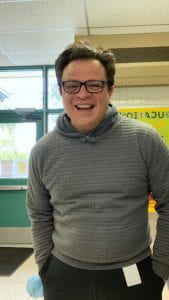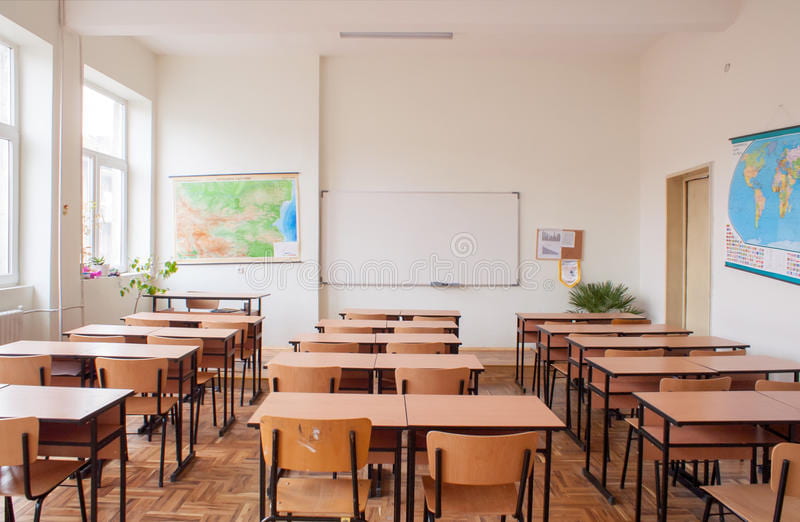“We’re Not Giving up on These Kids”
An audio interview with Ignacio Valdez
By Michelle Dahlenburg, CHERR Faculty Fellow
For our Resiliency Stories project, CHERR has been talking with people in Texas about what they’ve learned about resiliency during Covid times. Today we share an audio story created from our interview with special education coordinator Ignacio Valdez.
Growing up in Laredo, Texas, Ignacio Valdez often felt like he was different from other kids. First, there was his name.

IGNACIO VALDEZ: I wanted to be a David or a Michael or a Robert. I was Ignacio and I had a couple of teachers who really struggled. I had one teacher, Miss Rodman, in sixth grade math, who would call me “whatever,” because she just did not want to even try.
Then there were his eyebrows.
VALDEZ: I’m very light skinned, and it looks sometimes like I shaved my eyebrows, like I don’t have eyebrows. And I totally have eyebrows. They’re just very light. So kids would, you know, pick on that.
And his feet.
VALDEZ: I was also born with club feet. So I was always in pain and had to wear these really clunky orthopedic shoes.
As an adult, Ignacio took an alternative route, and got his college degree at age 37. He’s now a special education coordinator, and his past experiences give him a lot of empathy for his students and their challenges.
VALDEZ: Our paths are not necessarily always linear, and we’re gonna stumble and we’re gonna have these setbacks.
Ignacio works in the San Antonio Independent School District. His students go to Title 1 schools, so many of them come from low-income families.
He resists the easy resilience narrative for his students. You know the kind.
VALDEZ: I don’t have a Disney-ready, overarching, like super happy story.
He’s been reading educator Dr. Bettina Love’s recent book, We Want to Do More Than Survive. In the typical narrative, Dr Love says, resiliency in students is like perseverance.
VALDEZ: You get an essay back and it’s covered in red, and you having the resiliency to kind of go back in there and and stick with it and revise it and turn it into better paper. Versus a student who maybe gets it back and feels like it’s one more thing or you’re picking on them and and then they don’t turn it in.
And that may be true for some students, he says.
VALDEZ: But how do you measure that when you have a student who is not sleeping? Because they’re working after school, or they live in an area where there’s a lot of crime or poverty, or they have all these other things weighing on them. How do we measure their resiliency? You know, how are we looking at that?
Ignacio’s district had to look at those questions deeply when COVID started in March 2020.
VALDEZ: A lot of our parents work in the service industry. So they did not have the opportunity to just lock down and stay home and not go to work. They were working at HEB. They were working at hotels and restaurants and other areas where they did not shut down. So a lot of our parents were leaving kids home alone or with a grandparent or with an older sibling to go to work. So they couldn’t go to class at traditional hours, 8 to 3 or whatever.
The district created the Digital Learning Playground. Kids could log in and do their lessons whenever it worked best for them.
But some students were struggling with their mental health. Ignacio’s district decided to split special education into two houses.
VALDEZ: One side is Disability Services. That’s your traditional special education. The other side, they rebranded us as SEAD and Restorative practices, SEAD is Social Emotional, Academic Development and Restorative Practice. That’s the side that I work on.
The program includes positive behavior intervention and support, social emotional learning, and restorative practices. Some of this work came from the realization that the district was suspending kids at an alarming rate, and contributing to the school to prison pipeline.
VALDEZ: We know that if a child is suspended, they’re more likely to drop out of school, to not do well in school, to maybe even engage in a life of crime. There’s all these statistics that back that up. So what’s a different way? What’s something else that we can do?
The first phase of restorative practice starts with the adults and how they approach students.
VALDEZ: So if a student arrives late, it’s not, “oh, great, you’re late,” you know, or “he finally decided to show up.” It’s like, “is everything okay? I’m glad you’re here today.” So it’s a reframing of how we think about our students and how we approach them, whether it comes to correcting their behavior or interacting with them.
The second phase is teaching the students to use “I statements” to explain how they’re feeling and what they need. For example –
VALDEZ: “I feel discouraged when you are talking when I am talking, because it seems like you are disrespecting me, you know, it feels like that.” And so then we try to get the students to talk like that also. And it can be difficult for them because nobody talks like that! So we’ll say, “okay, today we’re going to focus on this one strategy.” And you hear the language and you hear people stumbling through it. But they’re doing the work!
Now that school’s back in person, the students, staff, and teachers are happy to be back together, but they’re recovering, slowly. Like a lot of places in the US, his district is facing severe teacher shortages. Teachers and staff are exhausted. Some students are really struggling. Ignacio gets a lot of opportunities to try out restorative practices.
Recently, Ignacio got called to a middle school classroom to support a disruptive student. A boy was upset because a female castmate had had to drop out of the school play because of a family emergency.
VALDEZ: And this is a boy who gets kind of picked on. He’s an easy target. He looks a little different than the others, sounds a little different than the others. You know, he’s not from that area. So he ended up leaving the classroom. I followed him. I was able to talk to him a little bit. And he’s like, “I always get bullied.” I’m like, “Well, you know, have you said anything?” He’s like, “Why say anything? Nobody’s gonna do anything.” “Have you talked to your parents?” “My parents don’t care about this. And I should just kill myself.” He was in that frame of mind, right?
And so now, that’s a whole other thing where I have to get the counselor involved. But right now I’m just trying to kind of keep him talking, right? See what’s going on with him.
Ignacio kept trying to connect with the boy. And the boy wasn’t having it. So he tried a new tactic.
VALDEZ: So I saw that he was wearing black fingernail polish and some bracelets on his hand. I’m like, “hey are you a punk rocker?” “What do you know about punk rock music?” the boy asked. So we start talking about some bands that I know from when I was a kid. He’s like, “Yeah, I’m familiar with that band. I like this band.”
And I’m like, “Well, do you play any instruments?” And he’s like, “Well, I play the clarinet. But that’s not really punk rock.” And I’m like, “Hey, here’s a band that I think you’re gonna you need to know about. The guy plays an accordion. He used to play guitar, but he liked to play the accordion with his family. And he’s like, ‘what is an instrument that is not punk rock at all? And that’s the accordion.’ He said, ‘how punk rock is it to play an instrument that’s not considered punk rock, right?’”
So Ignacio plays the boy some of the guy’s music.
VALDEZ: It’s a local San Antonio band, Piñata Protest. The accordion player/lead singer is actually a social studies teacher at one of our academies. Alvaro del Norte.
So the song that I played for him was Tragos Amargos, and it’s an old traditional Spanish song. But this guy, punk-a-fied it. He made it faster and modernized it. And when my students heard the newer version, he’s just like, “Oh, that’s cool. I really like that.” And his face lit up and he was like, “I really wanna learn to play guitar.”
Ignacio connects the boy to a local music store. The owner invites him to come in, grab an amp, and play guitar whenever he wants.
VALDEZ: So he’s done that a couple of times. And when he sees me at school now, his face kind of lights up and he’s like, “I was able to play a Gibson, a Les Paul, and I was playing through a Marshall amp!” And I’m like, “Great!” I’m hopeful that he’s feeling that somebody is looking out for him.
During professional development programs, teachers often look to Ignacio for resources for challenging kids like this.
VALDEZ: Teachers will sometimes ask me, “Give me one strategy, just one thing that I can do tomorrow that’s going to make a difference.” And I go back to relationships. I say, “work on your relationships.” And sometimes they scoff, sometimes they roll their eyes. But I have found that that’s the thing. And it’s not always easy. It’s not always easy to connect with these kids, especially the ones that are older and maybe are a little distrusting and don’t really know what to make of you.
You keep showing up. You keep showing them your heart, sooner or later they do come around. So I guess that’s us being resilient, right? Teachers being resilient, right? We’re not giving up on these kids.
The work isn’t easy, but Ignacio sees schools trying and succeeding.
VALDEZ: I have hope that long term, we will see some significant change in how we interact with our students, with our community, with each other. Because they are, in a lot of ways, our customers, right? We work for them.
A lot of the conditions that exist in these areas are not a result of what they did, right? It’s stuff that’s been done to them, economic policies in underdeveloped areas and underserved areas. So we also need to look at ourselves in the mirror and say, Hey, what was our role in this? And be honest with that, and not just put the blame on kids and families. So to me, restore, I hope, it means that we’re restoring to what it could be, what it should be.
Special thanks to Alvaro del Norte for permission to use his recording of Tragos Amargos.
Other music credits:
Lobo Lobo by Blue Dot Sessions
Desmontes by Blue Dot Sessions
